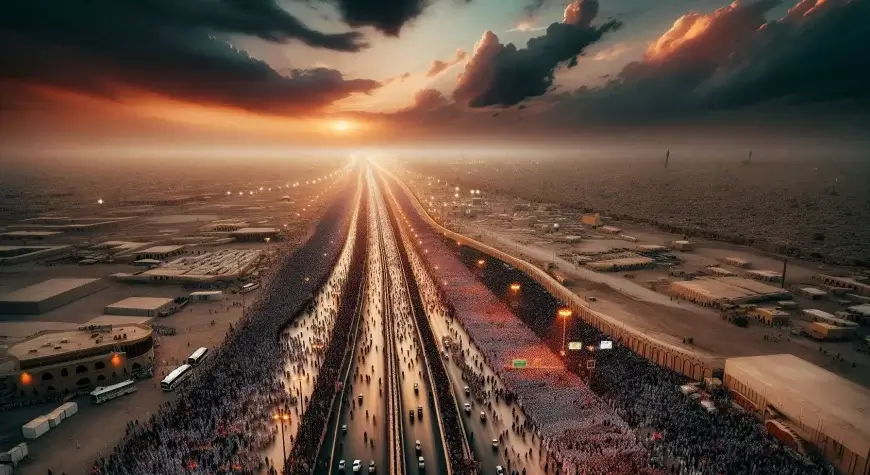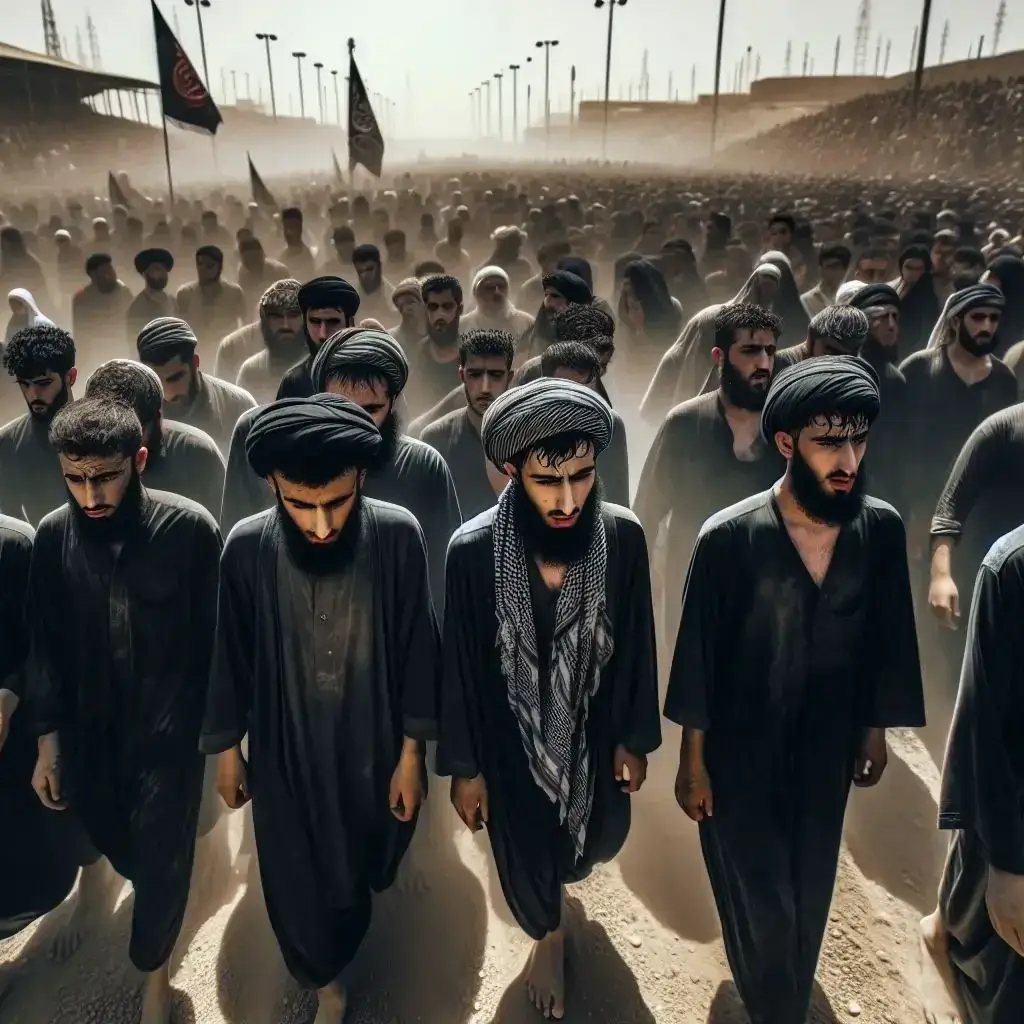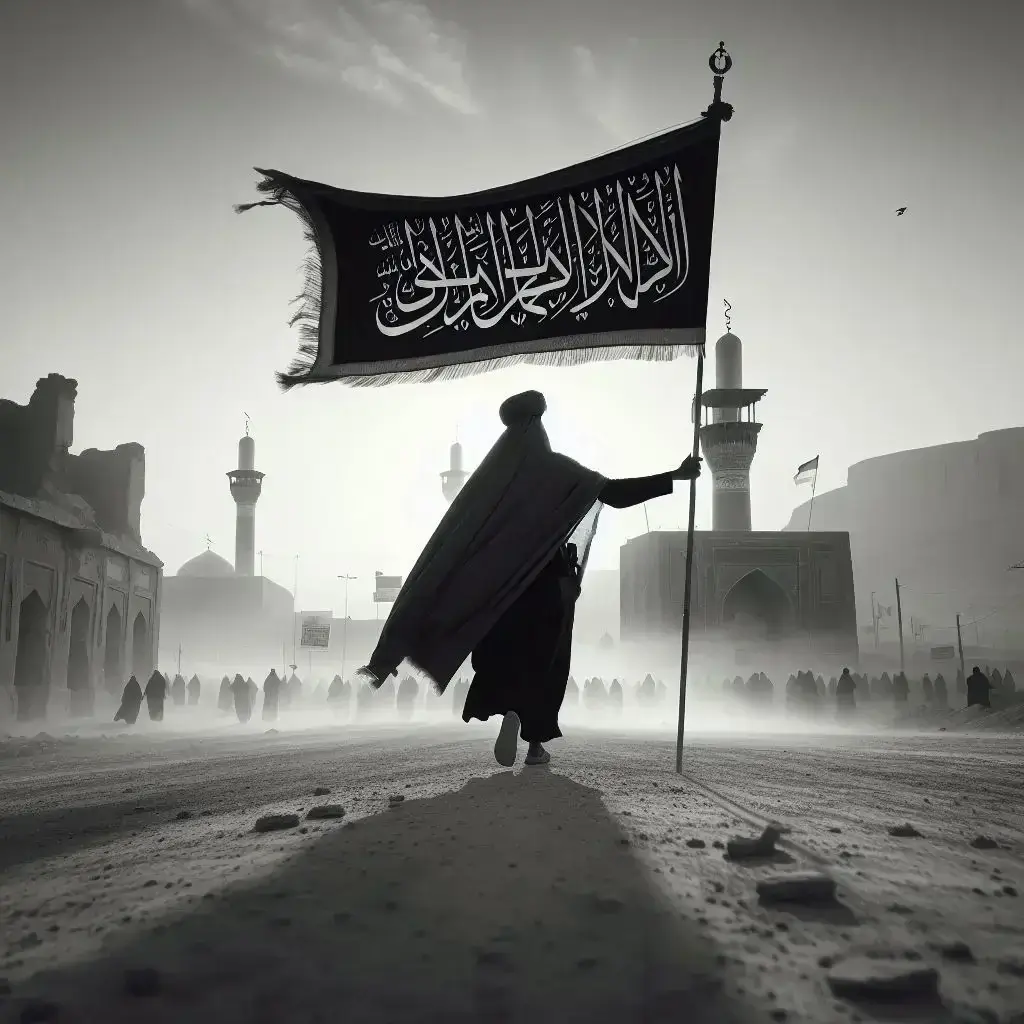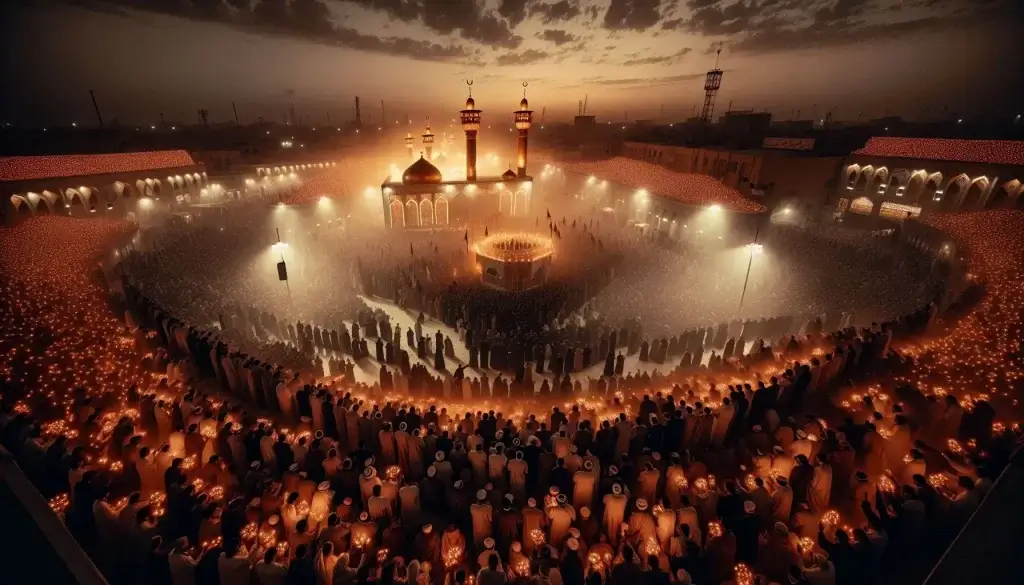Arbaeen: Understanding the World’s Largest Annual Pilgrimage

Every year, millions of people from around the world embark on a profound journey to Karbala in Iraq to participate in the Arbaeen pilgrimage. This extraordinary event, recognized as the world’s largest annual pilgrimage, holds immense significance for Shia Muslims who commemorate the martyrdom of Imam Hussein, the grandson of Prophet Muhammad.
During the forty-day mourning period leading up to Arbaeen, pilgrims endure incredible hardships as they traverse hundreds of kilometers on foot, often barefoot, chanting and mourning in remembrance of Imam Hussein’s sacrifice.

What makes Arbaeen truly remarkable is the sheer magnitude of participation. Estimates suggest that over 20 million pilgrims flood Karbala every year, creating a sea of people united in their devotion and reverence. The pilgrims come from all walks of life and diverse backgrounds, converging upon this sacred city to pay homage and renew their vows of loyalty to Imam Hussein and his cause.
Despite the challenges, the Arbaeen pilgrimage continues to grow each year, drawing people from every corner of the globe. It serves as a powerful symbol of unity, faith, and perseverance, showcasing the unwavering commitment of Shia Muslims to their beliefs and the enduring legacy of Imam Hussein.
Join us as we delve into the fascinating world of Arbaeen, exploring its history, significance, and the profound impact it has on the lives of those who undertake this remarkable pilgrimage.
Historical significance of Arbaeen
The Arbaeen pilgrimage holds immense historical significance for Shia Muslims worldwide. It commemorates the tragic events that unfolded on the plains of Karbala in 680 AD, where Imam Hussein, the grandson of Prophet Muhammad, was brutally martyred along with his family and companions.

This pivotal moment in Islamic history has reverberated through the centuries, shaping the spiritual and political landscape of the Shia community. Arbaeen marks the fortieth day after Imam Hussein’s martyrdom, a time when his sister, Sayeda Zainab, and the surviving members of his family returned to Karbala to mourn their profound loss.
The annual pilgrimage to Karbala has become a powerful symbol of resistance, resilience, and unwavering devotion to the principles of justice, compassion, and sacrifice embodied by Imam Hussein. Through the act of walking to Karbala, often barefoot and in a state of profound grief, the pilgrims pay homage to the immense suffering endured by Imam Hussein and his companions, and renew their commitment to upholding the values for which they gave their lives.
Related Article : Significance of Ashura
Arbaeen pilgrimage rituals and traditions
The Arbaeen pilgrimage is rich in rituals and traditions that have been passed down through generations of Shia Muslims. As the pilgrims make their way to Karbala, they engage in a range of devotional practices that deepen their connection to the event and its significance.

One of the most iconic rituals is the act of walking to Karbala, often covering hundreds of kilometers on foot. This arduous journey, undertaken by millions of people every year, is seen as a physical manifestation of the pilgrims’ spiritual and emotional commitment to Imam Hussein’s cause. Along the way, they chant, recite poetry, and engage in collective mourning, creating a powerful sense of unity and shared purpose.
Upon reaching Karbala, the pilgrims visit the shrines of Imam Hussein and his companions, offering prayers, reciting Quranic verses, and performing rituals that honor their memory. The faithful also engage in self-flagellation, a practice known as “tatbir,” as a means of expressing their grief and solidarity with the martyrs of Karbala. This powerful display of devotion and sacrifice has become a defining feature of the Arbaeen pilgrimage.
The importance of Imam Hussein in Arbaeen
At the heart of the Arbaeen pilgrimage is the revered figure of Imam Hussein, the grandson of Prophet Muhammad. Imam Hussein’s unwavering stance against tyranny and his ultimate sacrifice on the plains of Karbala have made him a towering symbol of resistance and moral fortitude within the Shia Muslim tradition.
Imam Hussein’s refusal to pledge allegiance to the Umayyad caliph, Yazid, and his subsequent martyrdom have become a rallying cry for the Shia community, who see in his actions a profound commitment to upholding the principles of justice, equality, and the defense of the true teachings of Islam. The Arbaeen pilgrimage, therefore, is not merely a commemoration of a historical event, but a celebration of Imam Hussein’s enduring legacy and a reaffirmation of the Shia community’s dedication to his cause.
Through the Arbaeen pilgrimage, Shia Muslims from around the world come together to honor Imam Hussein’s sacrifice and to draw inspiration from his unwavering courage and moral integrity. The pilgrims seek to emulate his example, striving to embody the virtues of compassion, humility, and resistance to oppression in their own lives. In this way, the Arbaeen pilgrimage serves as a powerful means of preserving and transmitting the profound teachings and legacy of Imam Hussein to future generations.
Arbaeen pilgrimage statistics and numbers
The Arbaeen pilgrimage is widely recognized as the largest annual gathering of people in the world, with estimates suggesting that over 20 million pilgrims converge on Karbala every year. This staggering number is a testament to the deep-rooted devotion and commitment of Shia Muslims to the Arbaeen commemoration.
The sheer scale of the pilgrimage is truly awe-inspiring, as millions of people from diverse backgrounds and nationalities come together in a display of unity and shared purpose. The pilgrims hail from countries across the Middle East, Asia, Africa, Europe, and the Americas, underscoring the global reach and significance of the Arbaeen event.
The logistics of accommodating and providing for such a vast number of pilgrims is a monumental undertaking, requiring extensive coordination and planning by the Iraqi government, local authorities, and various religious organizations. From providing food, water, and medical services to ensuring the safety and security of the pilgrims, the Arbaeen pilgrimage is a massive logistical challenge that is met with remarkable efficiency and dedication.
Arbaeen pilgrimage routes and destinations
The Arbaeen pilgrimage is not a single, linear journey, but rather a network of interconnected routes and destinations that converge upon the holy city of Karbala. Pilgrims embark on their journeys from various starting points, often walking hundreds of kilometers to reach their final destination.

One of the most well-known and historically significant routes is the “Arbaeen Walk,” which originates from the holy city of Najaf, the resting place of Imam Ali, and extends for over 80 kilometers to Karbala. This arduous journey, undertaken by millions of pilgrims each year, is seen as a powerful act of devotion and sacrifice, as the pilgrims brave the elements and endure physical hardship to honor Imam Hussein’s memory.
In addition to the Arbaeen Walk, there are numerous other routes that converge on Karbala, each with its own unique history and significance. Pilgrims may also visit other important sites along the way, such as the shrines of Imam Abbas and the martyrs of Karbala, further enriching their spiritual experience and deepening their connection to the Arbaeen commemoration.
Impact of Arbaeen on local communities and economy
The Arbaeen pilgrimage has a profound and wide-ranging impact on the local communities and economies of Iraq, particularly in the city of Karbala and the surrounding areas. The influx of millions of pilgrims every year creates a significant demand for goods and services, transforming the region into a bustling hub of activity and economic opportunity.
Local businesses, ranging from hotels and restaurants to transportation providers and vendors, experience a surge in activity during the Arbaeen period, with many reporting a substantial increase in revenue and profitability. This economic boost not only benefits the immediate Karbala region but also extends to neighboring cities and communities, as pilgrims traverse the various routes and destinations along their journey.
Beyond the economic impact, the Arbaeen pilgrimage also fosters a strong sense of community and social cohesion among the local populations. Residents of Karbala and the surrounding areas often volunteer their time and resources to assist the pilgrims, providing food, shelter, and other forms of support. This spirit of hospitality and service has become a defining feature of the Arbaeen pilgrimage, strengthening the bonds between the local communities and the visiting pilgrims.
Arbaeen pilgrimage in the age of social media
In the digital age, the Arbaeen pilgrimage has taken on a new dimension, with social media playing a crucial role in shaping the narrative and amplifying the voices of the participants. Through platforms like Twitter, Instagram, and Facebook, the pilgrims are able to share their experiences, insights, and personal reflections with a global audience, fostering a deeper understanding and appreciation of the event.
Social media has also become a powerful tool for organizing and coordinating the Arbaeen pilgrimage, with various religious and community organizations using these platforms to disseminate information, provide logistical support, and connect with the wider Shia community. Pilgrims, in turn, use social media to plan their journeys, seek guidance, and connect with fellow participants, creating a vibrant online community that complements the physical pilgrimage.
Furthermore, the proliferation of social media has enabled the Arbaeen pilgrimage to reach a broader audience, transcending geographic and cultural boundaries. Through the sharing of images, videos, and personal narratives, the Arbaeen story is being told to a global audience, inspiring solidarity, empathy, and a deeper understanding of the event’s significance. This digital engagement has the potential to foster greater interfaith dialogue and promote the universal values of compassion, justice, and resistance to oppression that lie at the heart of the Arbaeen commemoration.
Arbaeen pilgrimage and interfaith
The Arbaeen pilgrimage, despite its deep roots in the Shia Muslim tradition, has the potential to serve as a powerful platform for interfaith dialogue and understanding. As millions of pilgrims from diverse backgrounds converge on Karbala, they bring with them a wealth of cultural, religious, and social experiences that can enrich the overall experience and foster a greater appreciation for the common values that unite humanity.
Throughout the pilgrimage, there are instances of interfaith cooperation and collaboration, with members of different religious communities coming together to support the pilgrims, provide aid and assistance, and engage in meaningful dialogue. This spirit of unity and mutual respect has the power to transcend religious and cultural boundaries, promoting a message of peace, tolerance, and shared humanity.
By opening up the Arbaeen pilgrimage to a broader audience and facilitating interfaith engagement, the Shia Muslim community has the opportunity to showcase the universal values of justice, compassion, and resistance to oppression that are at the heart of the Imam Hussein’s legacy. This cross-cultural exchange has the potential to inspire a deeper understanding and appreciation for the Arbaeen commemoration, while also contributing to a more inclusive and harmonious global community.
The Arbaeen pilgrimage is a testament to the enduring power of faith, resilience, and the human spirit. Year after year, millions of Shia Muslims undertake this remarkable journey, braving the elements, overcoming logistical challenges, and confronting personal hardships to pay homage to the legacy of Imam Hussein and the martyrs of Karbala.
Through this act of collective devotion and sacrifice, the Arbaeen pilgrimage has become a symbol of the Shia community’s unwavering commitment to the principles of justice, equality, and the defense of the true teachings of Islam. It serves as a powerful reminder of the sacrifices made by Imam Hussein and his companions, and a call to action for the faithful to uphold these values in their own lives.
Beyond its religious significance, the Arbaeen pilgrimage has the potential to transcend cultural and religious boundaries, fostering greater understanding, dialogue, and cooperation among diverse communities. As the world becomes increasingly interconnected, the Arbaeen pilgrimage can serve as a bridge, connecting people from all walks of life and inspiring a shared commitment to the universal values of compassion, justice, and resistance to oppression.
As the Arbaeen pilgrimage continues to grow in scale and significance, its enduring legacy will undoubtedly inspire generations to come, reminding us of the power of faith, unity, and the unwavering human spirit in the face of adversity. Through this remarkable annual event, the Shia Muslim community reaffirms its commitment to the teachings of Imam Hussein and the enduring principles that have shaped the course of history.

